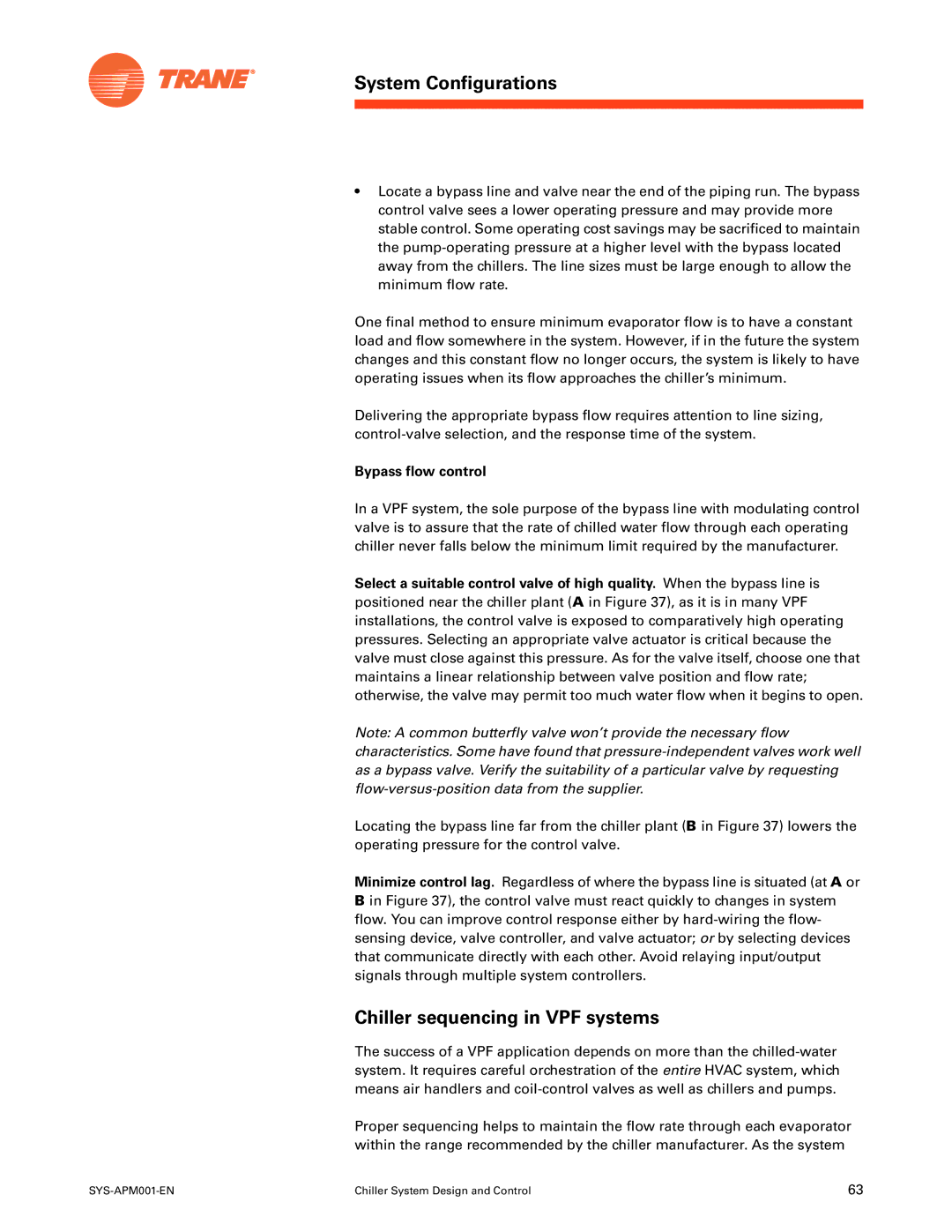SYS-APM001-EN specifications
The Trane SYS-APM001-EN is an advanced control system designed for HVAC (Heating, Ventilation, and Air Conditioning) applications, specifically tailored to enhance energy efficiency and system performance. This comprehensive solution integrates cutting-edge technologies to optimize climate control in commercial and industrial environments.One of the main features of the SYS-APM001-EN is its intuitive user interface. The system is equipped with a large, easy-to-read display that provides real-time data on system performance, energy usage, and environmental conditions. This user-friendly interface makes it simple for operators to monitor and adjust settings, ensuring optimal comfort levels and efficient energy consumption.
Another key characteristic of the SYS-APM001-EN is its advanced data analytics capabilities. The system collects and analyzes data from various sensors throughout the building, providing insights into occupancy patterns, equipment performance, and energy consumption trends. This data-driven approach allows facility managers to make informed decisions about system adjustments, predictive maintenance, and energy savings.
The SYS-APM001-EN also boasts robust integration capabilities. It can seamlessly connect with a variety of building management systems (BMS) and other third-party devices. This interoperability enables a cohesive operational ecosystem where HVAC systems can communicate and cooperate with lighting, security, and fire safety systems, enhancing overall building efficiency.
Energy efficiency is a hallmark of the SYS-APM001-EN, as it implements sophisticated algorithms to optimize system operation. These algorithms adjust equipment performance in real-time based on current conditions, thereby reducing energy waste and lowering operational costs. The system is designed to support multiple energy-saving strategies, including demand-controlled ventilation and optimal start/stop scheduling.
Additionally, the SYS-APM001-EN is built with scalability in mind, accommodating facilities of various sizes and configurations. Whether it’s a small office building or a large industrial complex, the system can be tailored to meet specific needs, ensuring that HVAC performance aligns with operational goals.
In conclusion, the Trane SYS-APM001-EN is an innovative HVAC control solution that emphasizes user experience, data-driven decision-making, and energy efficiency. With its advanced features and technologies, it is an essential tool for optimizing building performance and enhancing occupant comfort while reducing environmental impact.
